Affiliate links on Android Authority may earn us a commission. Learn more.
Google Pixel Tablet problems and how to fix them
Google’s return to the tablet space with the Pixel Tablet received a lot of attention. Combined with the included charging dock, the tablet could also take up hub duties when not in use, which is one of its biggest highlights. Solid performance, a good display, and Google’s software prowess make for a well-rounded tablet. However, like any tech, the Pixel Tablet has its share of bugs and glitches. Here’s a look at some common Pixel Tablet problems and how to fix them.
Editor's note: Not every Pixel Tablet will have these problems. In fact, it's more than likely that your Pixel Tablet will not have any issues at all.
Problem #1: Battery not charging using the dock
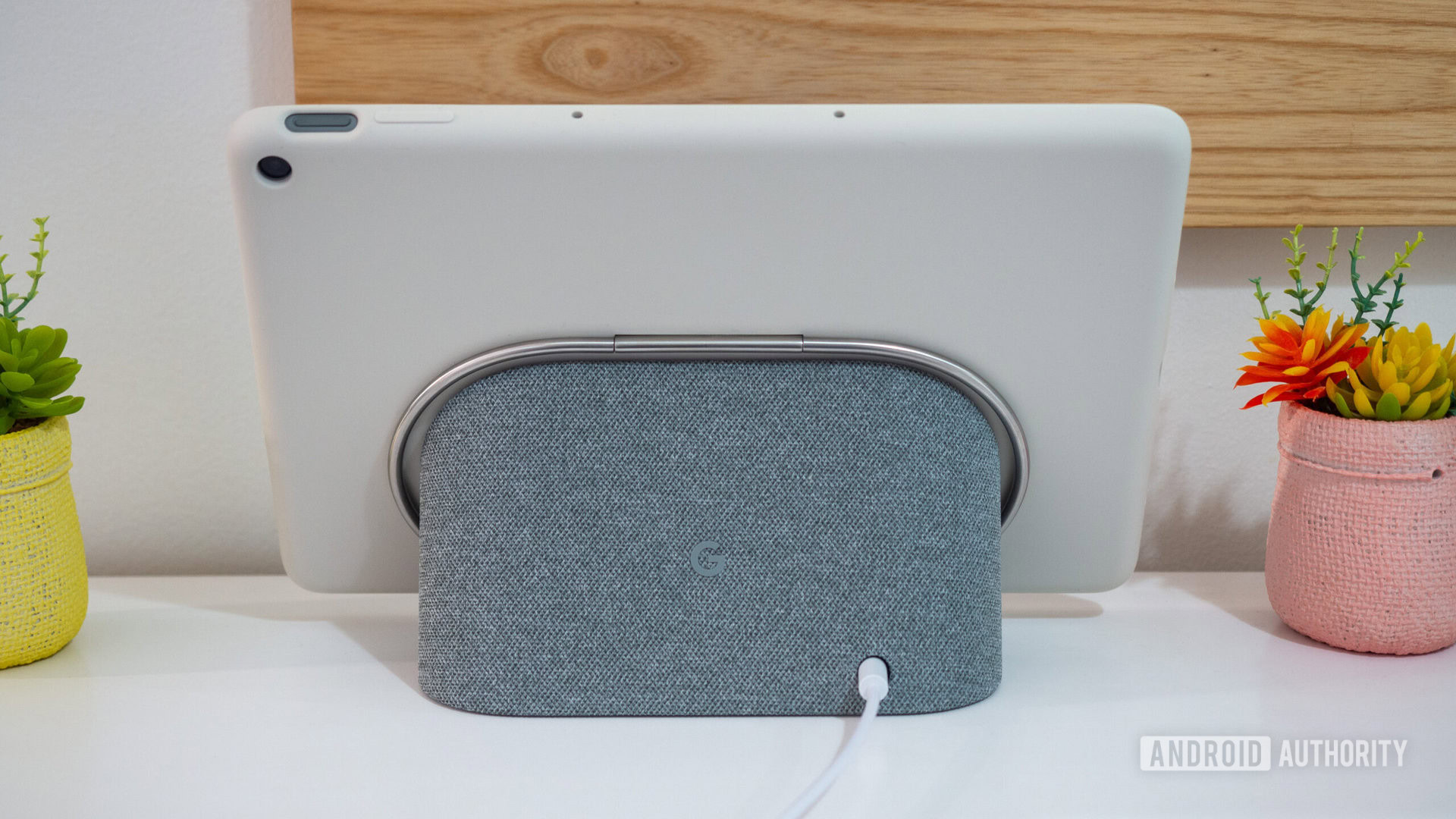
Some users say that their Pixel Tablet doesn’t charge when placed on the dock. For some, the tablet stops charging at the 90 percent mark, which is a feature and not a bug, but something you can bypass. For others, the tablet doesn’t charge at all.
Potential solutions:
- The Pixel Tablet only charges 90 percent when on the dock to protect the battery. It’s a built-in feature that you can bypass, though. Go to Settings > Battery and select Charge to full. Similarly, if your charging is set to “Optimize for battery health,” the tablet will only charge 70 or 80 percent. You can disable the setting and bypass it by selecting “Charge to full.” However, this is just temporary, with the tablet automatically activating the feature again when the tablet is undocked and docked again. The tablet should charge to 100 percent when plugged into a wired charger.
- If the Pixel Tablet doesn’t charge at all, ensure that you are lining it up properly. It should start charging automatically if the tablet is placed on the dock correctly.
- If there’s no charge, undock the tablet and disconnect the speaker dock from the plug point. Plug it back in and wait for some time to make sure that the charger is on, or listen for the chime. If you don’t hear a chime and aren’t sure if the dock is getting power, press and hold the circular button at the bottom for around ten seconds until you hear the reset chime.
- Also, check that there isn’t any debris or smudges blocking the charging pins on the dock and the tablet. You might have to clean both to get the tablet to charge.
- Place the tablet back on the dock and see if it’s charging. If the speaker dock is still not charging the device and isn’t working in general (if the tablet doesn’t switch to hub mode or doesn’t play audio), you will have to send it in for repair or get a replacement.
Problem #2: Display problems
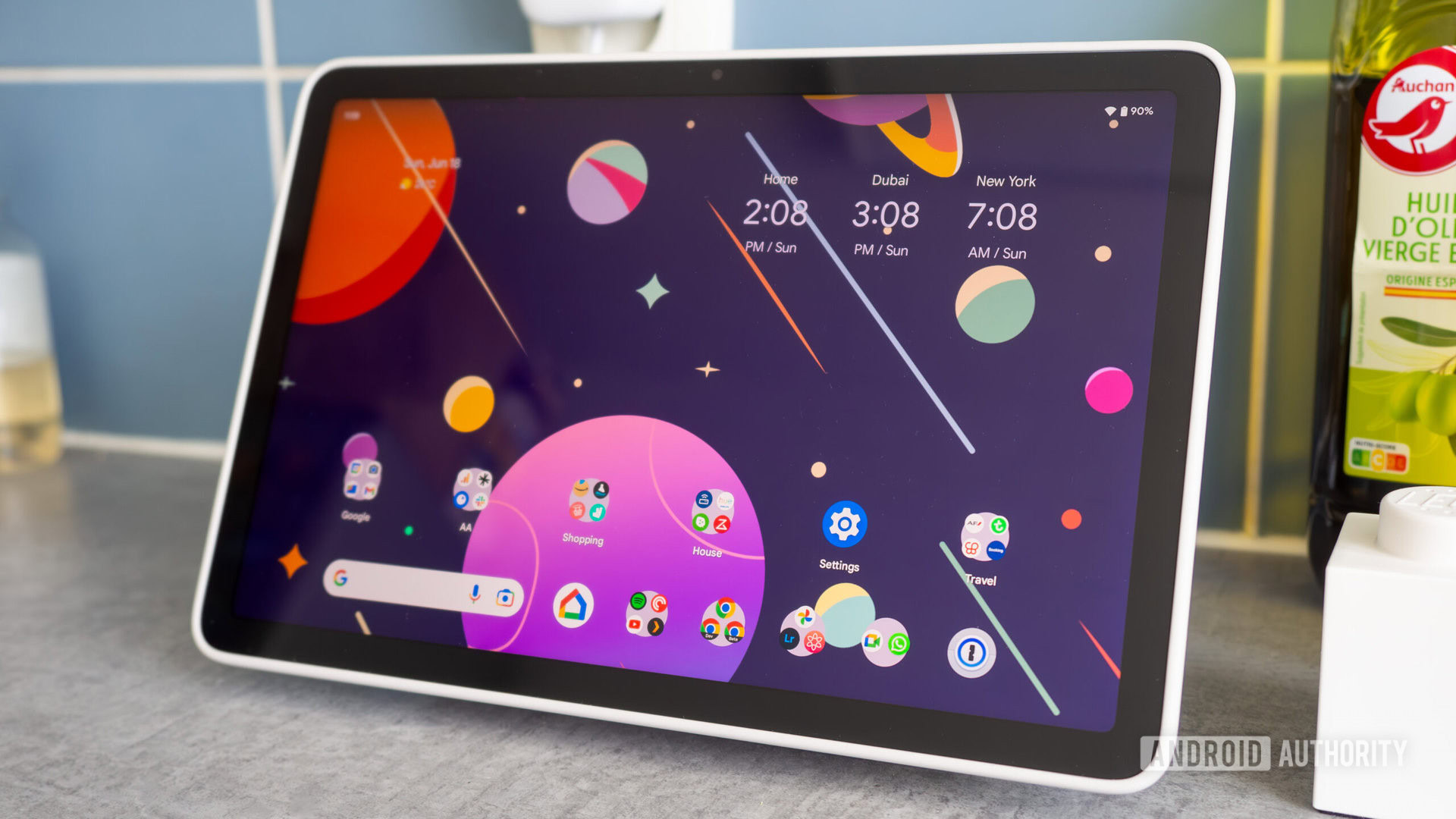
A few Pixel Tablet owners face problems with the device’s display not working, with the issues ranging from ghost touches on the screen to a frozen and unresponsive display.
Potential solutions:
- Users complain about ghost touches on the screen, causing problems with scrolling, navigation, and random app launches. This is likely related to the screen protector you’re using. Some users say that reducing the touch sensitivity helps, even if you use a screen protector. Go to Settings > Display and toggle off Screen Protector mode if it is enabled. Try and also keep the display free of oily smudges from fingerprints. In some cases, this ended up being a hardware problem, and the only option was to get a replacement.
- If your screen is frozen and unresponsive, you can perform a forced restart. Press and hold the power button and volume up key for ten to fifteen seconds until the screen turns off. Wait until the tablet automatically restarts.
- A frozen screen or laggy performance could be because of a rogue app. Check if the issue persists when the tablet is in Safe Mode (you’ll find the instructions on how to boot into Safe Mode below). If an app is the problem, uninstall any recently installed or updated apps to see if the issue goes away.
Problem #3: Voice recognition not working in Hub Mode
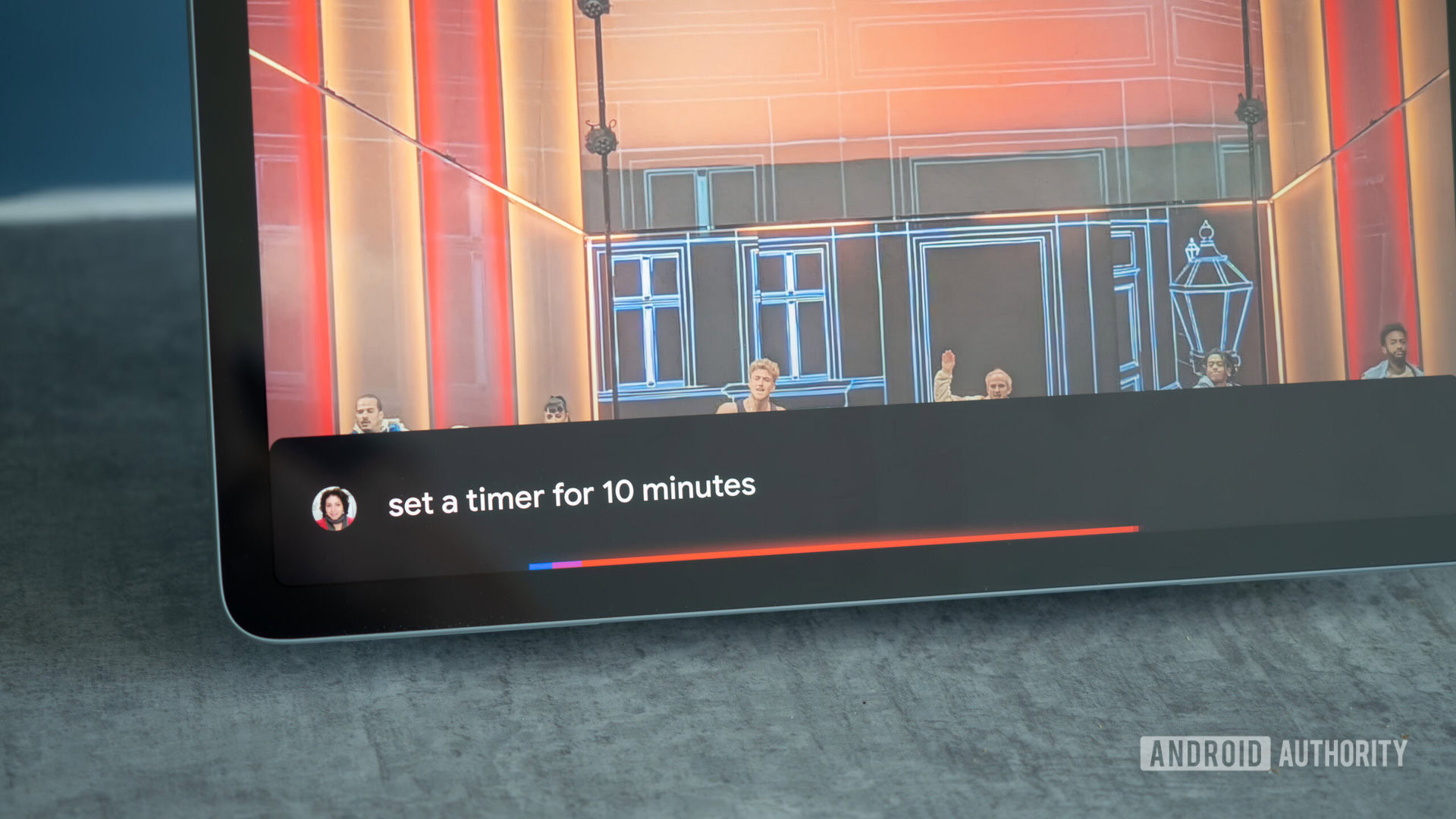
Some users say that the voice recognition doesn’t work when the tablet is docked and in Hub Mode. While the tablet recognizes the “Hey Google” command, subsequent instructions often require multiple attempts.
Potential solutions:
- The easiest way to get around the issue is to restart the Pixel Tablet after you set up Hub Mode. Once you go through the steps, undock the tablet and restart it. Place it on the speaker dock once it restarts, and voice recognition should work as expected.
- Some users say that the problem goes away when on the latest beta version of Android 14. However, keep in mind that beta versions will likely have bugs and glitches that might cause other problems.
Fixed problems/Problems where the only option is to wait for a software update
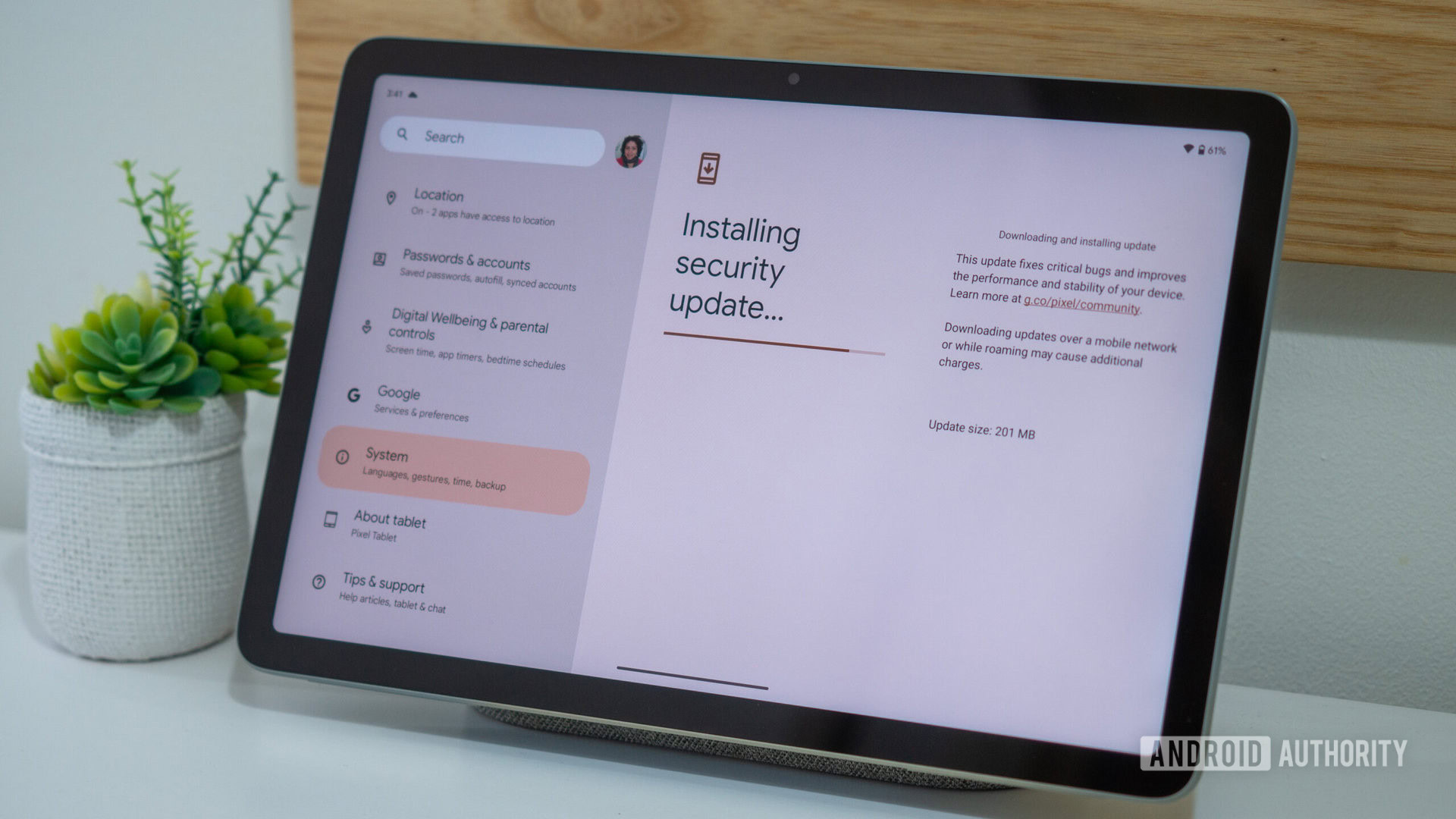
The Pixel Tablet suffered from a slew of bugs and glitches after launch, with many of them sticking around for months. However, the November and December updates addressed a lot of these issues. The December Pixel Feature Drop also added new features to the tablet, like Clear Calling and Spatial Audio with head tracking. Ensure that you update your Pixel Tablet to the latest version of Android. That said, there are still a few bugs included in the list below that don’t have workarounds, and the only option is to wait for a future software update.
- Issues with multiple user accounts: The Pixel Tablet had lots of problems when multiple users were signed into the device using their respective Google accounts. This ranged from voice recognition problems to gesture navigation completely breaking after switching accounts. The November and December updates include fixes for some of these issues. The only other option is to restart the tablet after switching accounts to temporarily work around the problem.
- Not able to access media storage: This was another issue caused by multiple user accounts but is serious enough to deserve its own mention. The November update included a fix. However, users who were stuck in a boot loop because of this problem had to go through a different set of steps, with only partial data recovery possible in some cases. If you still face this problem, update your Pixel Tablet, and check out the necessary steps to address the boot loop issue.
- Mouse not working on Google Chrome: Anyone using a mouse with the Pixel Tablet noticed that it didn’t work across half the screen when using the Chrome browser. The only option was to use an alternate browser. But it was a known bug and should now be fixed.
- Unable to set up Hub Mode: Quite a few users had problems setting up Hub Mode. Despite going through all the steps, the setup screen would appear every time the tablet was docked, or nothing would load after completing the setup. The only workaround in this case was to factory reset the tablet.
- Commands not working until the tablet is unlocked: Another known bug was the fact that the tablet wouldn’t run a command instruction until the device was unlocked, which defeated the purpose of issuing a voice command from a distance. This included setting timers and alarms, playing music, and more. The issue should now be fixed.
Guide – How to setup full-screen apps on the Pixel Tablet
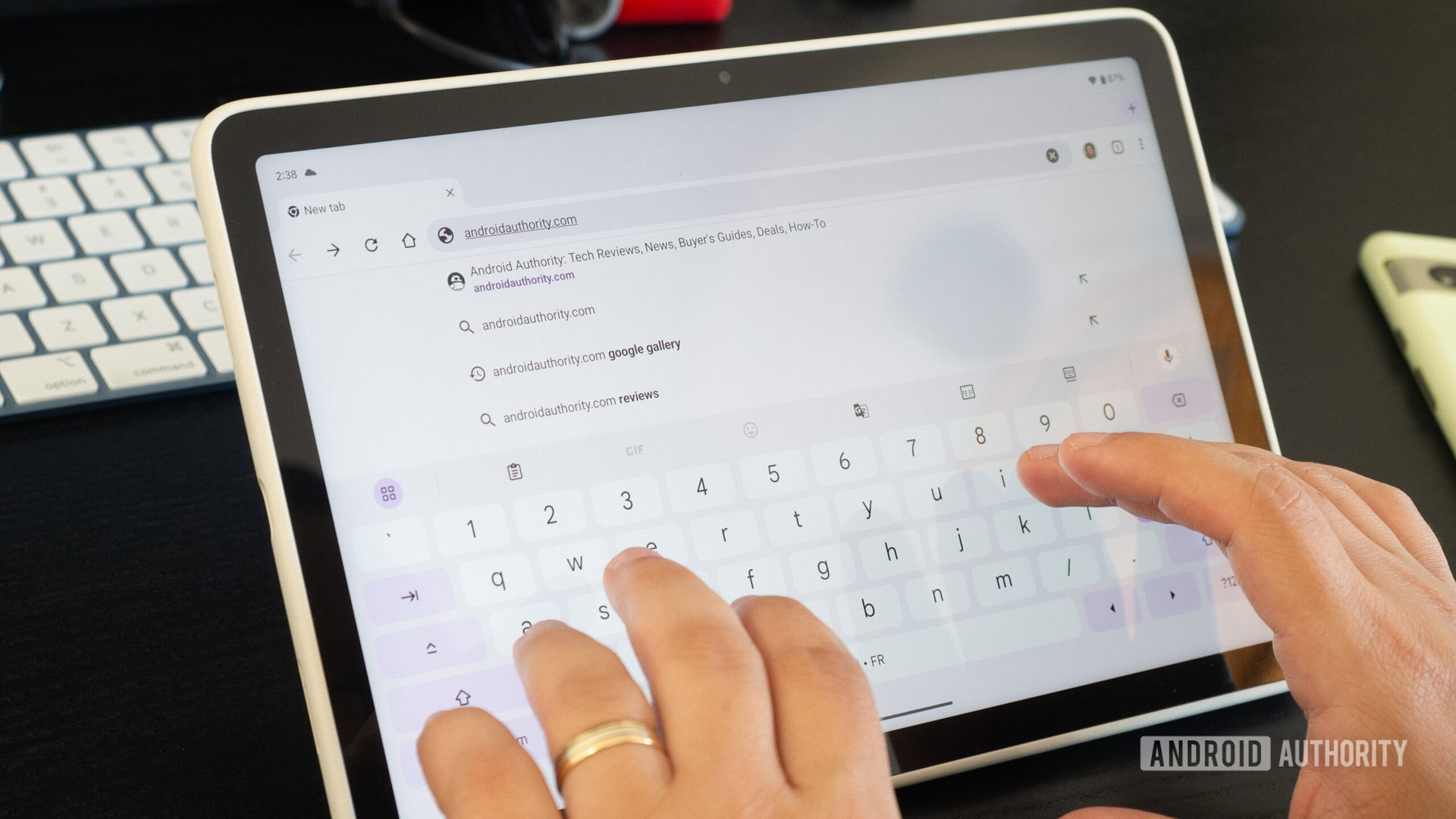
The December Pixel feature drop includes an easy way to change an app’s aspect ratio, giving users to set apps to full-screen mode. Go to Settings > Apps > Aspect Ratio. Select the app and pick an option between Full-screen, Half-screen, and 4:3.
You will have to do this individually for every app you want to use in full-screen. Also, something to remember is that this will likely only stretch an app to fit the tablet screen and won’t bring any additional functionality or features to the app. The latter will only be possible after an app developer optimizes their apps for large-screen tablet usage.
Guide – How to boot into Safe Mode and how to Factory Reset the Pixel Tablet
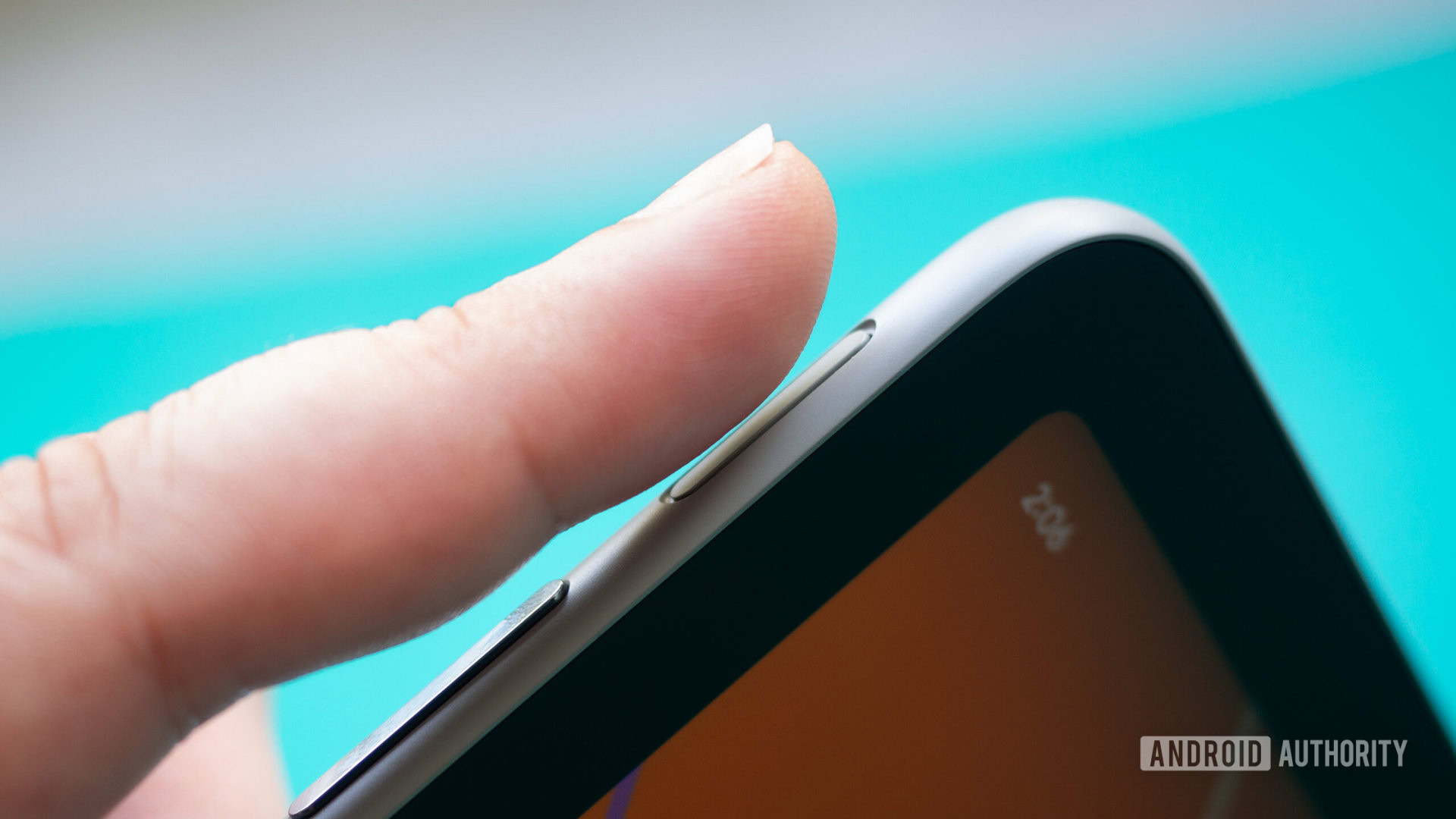
How to boot the Pixel Tablet into Safe Mode
If the tablet is on, press and hold the power button to open the power options, then long-press the power off icon. Tap to confirm on the pop-up message to reboot the device into Safe Mode.
If the tablet is off, press and hold the power button to start it, and then press the volume down button when the animation starts. Hold the volume down key until the animation ends, and the tablet should automatically open in Safe Mode.
You can exit Safe Mode by simply restarting the Pixel Tablet.
How to Factory Reset the Pixel Tablet
If the tablet is on:
Go to Settings > System > Advanced > Reset options and select Erase all data (factory reset). Enter your PIN or pattern and tap Erase Everything.
If the tablet is off:
Press and hold the power button and volume down key together until Fastboot mode (triangle icon with an exclamation point) appears. If you see “No command,” press and hold the power button. While holding the power button, press the volume up key once and release both.
Once in Recovery mode, use the volume keys to navigate up and down the menu. Go to Wipe data/factory reset and press the power button to confirm. Tap the power button to select Reboot system now after the phone is reset to factory settings.